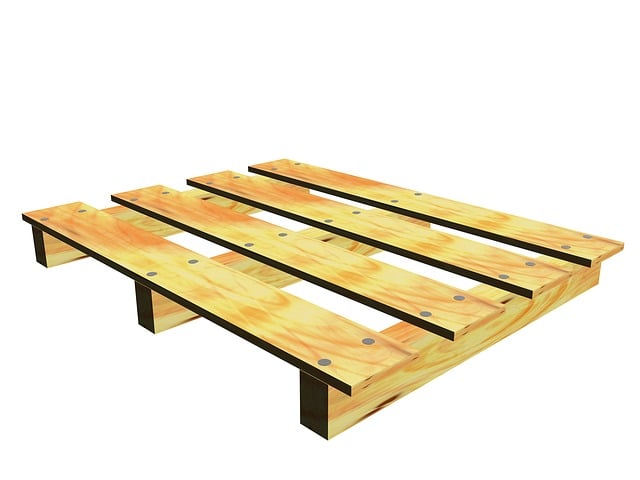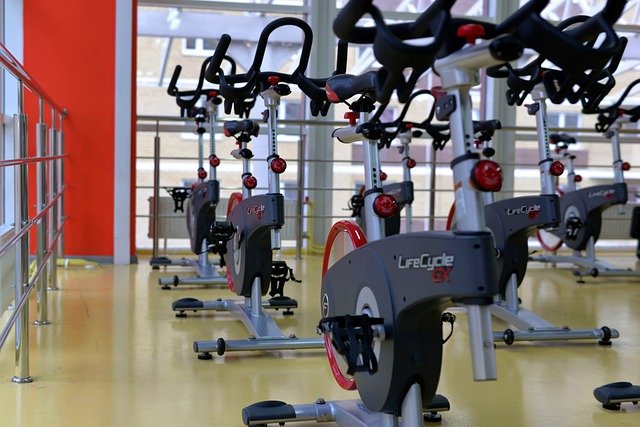

A pallet is a flat portable platform (mainly made of wood) used for transporting, storing, and handling goods. They come in many different sizes, shapes, and designs and can also be made of other materials. Each type of pallet is designed for a specific purpose and application and has its advantages and disadvantages. You thus need to make an informed decision when shopping for pallets. Below are a few tips and a guide on making an informed choice when looking for used pallets for sale. We will first start by identifying the most common types of pallets used today.
1. Euro Pallets (EPAL)
Euro Pallets is a trademark used to identify pallets that meet specific product specifications set by EPAL (European Pallet Association). The standardized design allows companies to exchange or interchange pallets without compromise. This is to say; a supplier can send fully loaded pallets to a customer and collect empty pallets from the same without needing to empty and reload. The supplier is thus assured of getting pallets up to the code and specifications set by the governing body.
Standardization also paves the way for quality control in the manufacture and design of these pallets. This eliminates the stress, anxiety, and confusion of getting substandard pallets.
Euro Pallet Features
– Made of wood
– 1200 x 800 x 144 mm dimensions
– Nine bobbins
– 5 top shelves
– Dynamic capacity of -/+1500kg
– Weight of -/+ 25kg
– Static load capacity of +/- 4000kg
– EPAL mark of quality
– Accessible from all the 4 sides
It is safe to say Euro pallets are of the highest quality possible, making them easily interchangeable in a pooling system. EPAL pallets are also sold and repaired by an EPAL-certified dealer, such as Rotom.
2. Disposable Pallets (The Cheap Alternative)
A disposable pallet, also known as a one-way pallet, is specifically designed to save on costs. With cheaper materials (e.g., residual wood) used to make these pallets, durability is greatly affected. One-way pallets are thus not as sturdy and durable as regular wooden pallets.
Features of one-way pallets:
– 5 top shelves
– Made of residual wood
– Relatively lighter
– Are a cheap alternative
– Best suited for no-return deliveries
– It can be used a couple of times (with handled with extreme care)
– Ideal for transport and export (save on weight and costs)
– 1200 x 800 x 120 mm dimensions
3. Chemical Pallets (CP1 to CP9)
These pallets were designed with a high load capacity and to resist corrosive and poisonous substances common in the chemical industry. Chemical pallets are built to handle heavy bags, loads, big bags, and drums in this industry. The pallets have abbreviations CP numbered from CP1 to CP9. Outlined below are the features and characteristics of chemical pallets.
Characteristics
I. CP1 pallet: Open bottom deck /with overhang, 1200 x 1000mm
ii. CP2 pallet: Open bottom deck/ with overhang/ 1200 x 800mm
iii. CP3 pallet: Open bottom deck/ with overhang/ 1140 x 1140mm
iv. CP4 pallet: Open bottom deck/ with overhand / 1300 x 1100mm
v. CP5 pallet: Open bottom deck / 1140 x 760mm
vi. CP6 pallet: Cross deck/ with overhang/ 1200 x 1000mm
vii. CP7 pallet: Cross deck / 1300 x 1100mm
viii. CP8 pallet: Cross deck/ hole in top deck for big bag/ 1140 x 1140mm
ix. CP9 pallet: All round deck/ 1140 x 1140mm
4. Display Pallets (Used In Retail And Supermarkets)
These pallets are relatively smaller than the rest at 800 x 600mm or even 600 x 400mm. Display pallets can be either plastic or wooden, though wooden pallets can handle more weight than plastics. Wooden display pallets come equipped with metal bobbins to take the extra weight. One of the reasons display pallets are used in retail stores and supermarkets is that they can be picked and stored directly in the store or truck with items on. They thus eliminate the need to transfer contents.
Display Pallet Features
– Used in retail stores, shops, and supermarkets as display units
– 800 x 600mm or 600 x 400mm
– Lightweight
– Have a smaller footprint
5. Wood fiber pallets (Export)
Wood fiber pallets are designed to be lightweight and comply with ISPM-15 guidelines. They are mainly meant for export, hence allowed to be shipped to any part of the world without the need for heat treatment or extra certificates. These pallets can be nested and stacked together to save on storage space. With no risk of splinters, bails, and/or sharp corners, wood fiber pallets are easier and safer to handle.
Characteristics Of Wood Fiber Pallets
– They are lightweight
– Most suited for export
– Are Nestable
– Are Stackable
– Have a lower load capacity compared to wood or plastic pallets
6. Plastic Pallets
Plastic pallets are the best alternative to wooden pallets. Although they have a similar load capacity, they are easier to clean and handle and lighter. Plastic pellets are also resistant to moisture and vermin, making them a hygienic option. Plastic pallets are a preferred option for transporting food-grade materials, as well as perishable materials. These pellets also meet ISPM 15 requirements and can be used for export.
Characteristics Of Plastic Pellets
– Easy to clean
– Lighter than wood pellets
– High load-bearing capacity
– Are more expensive than wooden pallets
– Hygienic
– Easier and safer to handle
– Fit for export as no additional treatment is required
7. Cardboard Pallets (User Friendly)
Cardboard pallets are quite similar to wood fiber pallets. They are commonly designed for export. This is because cardboard pallets are lightweight and do not require additional heat treatment, thus complying with the ISPM-15 guidelines. With no sharp corners, nails, or splinters, cardboard pallets can be considered user-friendly and safe. Weighing much less than wood fiber pallets, cardboard pallets are an affordable and eco-friendly option for anyone looking to save on both weight, shipping costs, and the environment. Their load capacity is, however, much lower, a reason they are commonly used to transport lighter items.
Characteristics of cardboard pallets:
I. They are relatively cheap and affordable
ii. Have a lower load capacity compared to wood fiber pallets
iii. Best suited for the export industry (no additional heat treatment is required)
iv. They are lightweight
v. Easy and safe to handle (no sharp edges, splinters, or nails).





